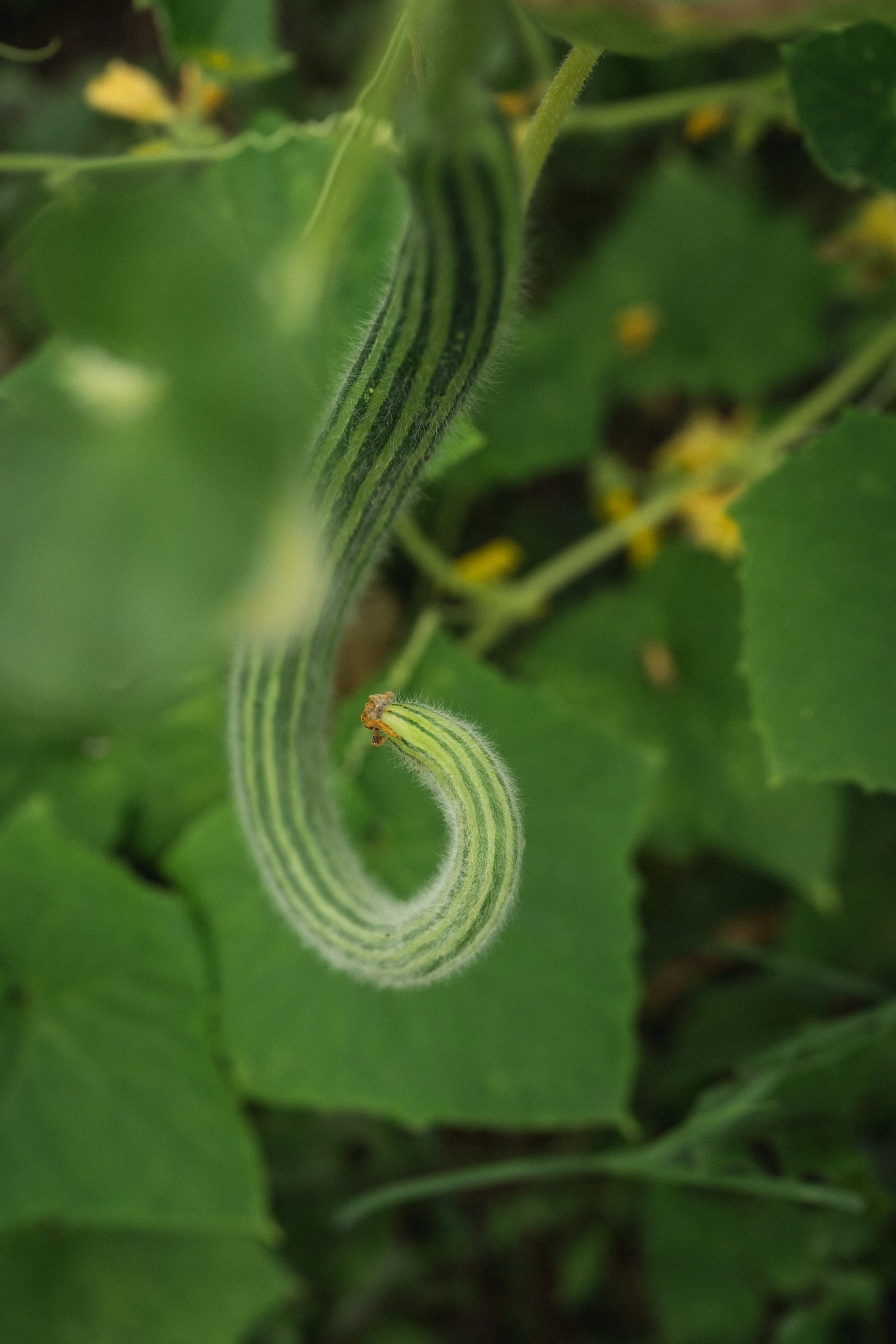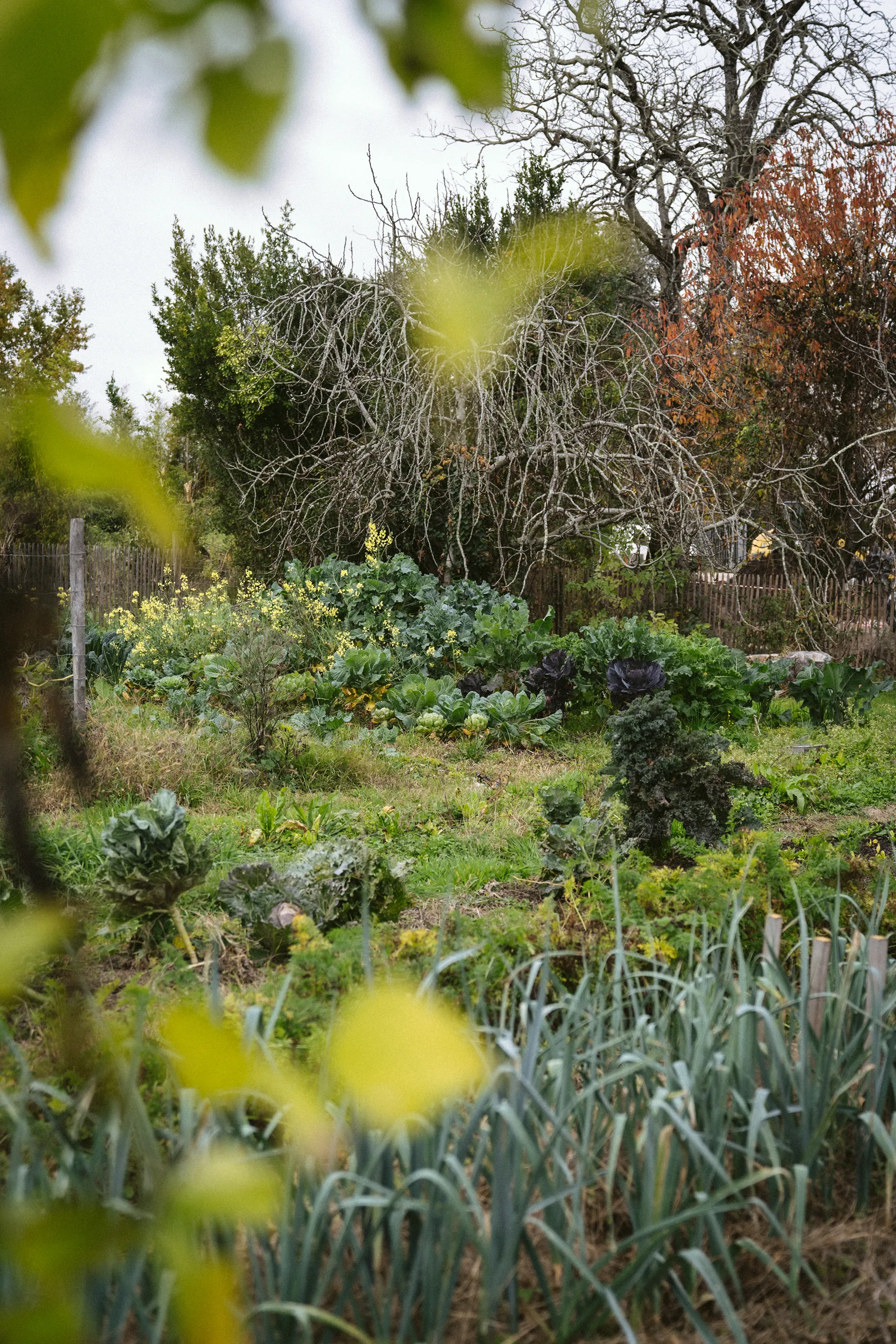Château Palmer welcomed its market gardener in 2020 and set about transforming an old space previously used for workers’ allotments into a nourishing kitchen garden. Mexican tomatillo, trumpet courgette and sweet Jimmy Nardello peppers were among the first vegetables planted a few months later, grown from heirloom seeds chosen for their taste and nutritional qualities, rather than their yields. With that, the estate’s food landscape began to take shape.




At the age of 20, spurred on by the memory of failing her English high school exams, Viviane Vincent-Tejero left Pauillac, north of Bordeaux, for Monterey, California. The young woman’s language trip quickly took a green turn. She enrolled at UCSB for a bachelor’s degree in environmental sciences and wrote her dissertation on the ecological impact of offshore wind farms, wildlife and wide-open spaces. Hired by a university laboratory specialising in terrestrial ecology, she then travelled across a 5,000-acre ranch populated by cows and pumas in the Santa Ynez Valley. Her subject of study was native grasslands, whose flowers had been overcome by brome grasses and oat crops planted by European settlers.


After ten years on the Pacific coast, Viviane returned to her native Médoc, where she found work as a wine tourism guide for a Grand Cru Classé estate. “This is where I discovered the technical side of wine. For a while, I was tempted to go into winegrowing, but I was unable to ignore the monoculture aspect of the industry, which was the exact opposite of what I wanted to do.” In the end, much to her surprise, she found herself drawn to growing vegetables and developed an interest in joualle, an ancestral multi-crop agriculture system combining vines, market gardening and agroforestry, all underpinned by a philosophy of mutual support between plants. “I wanted to do something tangible: produce and feed. Wine is poetic, but it doesn’t have the direct impact that food can have. All poetry is meaningless on an empty stomach.”
“All poetry is meaningless on an empty stomach”
Viviane Vincent-Tejero — Market Gardener at Château Palmer

Several people spoke to her about Château Palmer and its holistic farming project, which sought to combine winegrowing, livestock rearing, and market gardening. A subsequent meeting with Sabrina Pernet, the technical director overseeing the vines and winemaking, and the production staff was a revelation. “The teams really take this circular concept, this common sense and this desire for autonomy to heart. The brief was a simple one. Sabrina set me a challenge: ‘Here’s this space that’s no longer being used. Let’s see what you can do with it.’ And with that, the project began!” This was in February 2020, and the first vegetables began to emerge in July of the same year.


The château’s kitchen garden now stands on a previously fallow plot that was once dedicated to workers’ allotments, where some employees used to grow their own vegetables. “The reclaimed space was organised as a shared garden. When I arrived, one of the old workers was still tending his small plot of land,” explains the gardener as she leads us on a tour of the 17,600-ft.-sq. space, nestled on the other side of the legendary D2 road, just a stone’s throw from the château.

When she arrived, Viviane started observing the plants that were growing in the garden to understand the soil, which was initially compacted and overgrown with mugwort. As she built her first kitchen garden, she was forced to adapt to the limited space and so coupled her expertise in biodiversity management with Jean-Martin Fortier’s intensive organic market gardening techniques. Fortier has turned his organic micro-farm, Les Jardins de la Grelinette in Quebec, into a model of productivity, while respecting the men and women who work on it and making it a part of the local landscape.


In his book The Market Gardener, Fortier explains his method as follows: “The term ‘bio-intensive market gardening’ is commonly used to refer to a horticultural method that seeks to maximise the yield from a cultivated area while preserving, or even improving, the quality of the soil.” Needless to say, this was also a key objective for the château’s market gardener.
Fortier, a Quebec native, is famous for having popularised bio-intensive bed cultivation. This involves working the soil to depths of around 20 centimetres, without mixing the different layers. This respects the soil’s biological diversity, its main source of fertility, while making it easier for the plants to take root. Nutrients are then added, including compost, manure, and other green and brown plant matter. When the beds are all the same length and width, they optimise productivity and require fewer tools to operate. “We mainly work the soil with a campagnole, a mechanical tool used to break up clods and which doesn’t require petrol,” explains Viviane.


The beds are rotated in quick succession. As soon as one crop comes to the end of its production, it is replaced by another to optimise the available surface area. Viviane also combines low-growing crops such as bok choy with high crops such as broad beans in the same area, which doubles the production area. “There are also certain vegetables that require too much space and have long production cycles, such as long-term storage potatoes and alliums. These are not adapted to our growing methods for the château, and so it’s better to buy them in from other local market gardeners.”




“The teams really take this circular concept, this common sense and this desire for autonomy to heart”
Viviane Vincent-Tejero — market gardener at Château Palmer


In spring 2024, a second plot of the same size was added to this first production area, located in the heart of the Boston plot where cows, pigs and goats were already grazing. This new land should enable the Château Palmer winegrowers’ canteen to make further progress towards plant self-sufficiency. The ultimate objective is to give the teams the chance to eat together every day of the week with a healthy, balanced menu, to reconnect with a deep-rooted, meaningful way of eating. “During the 2023 grape harvest, around 85% of the vegetables served were grown by us, without having to compromise on the future requirements of the restaurant La Table du Château. It was a real challenge,” says the market gardener, whose team has expanded with the much-needed arrival of Julien to cope with the increased workload.

Concerned about both biodiversity and flavour variety, Viviane approached the Conservatoire du Goût in Floirac to develop Château Palmer’s vegetable repertoire. Founded in 2017 by Rachel Lagière and Christophe Collini, this group works to preserve heirloom seeds with high-quality flavour, a characteristic that takes precedence over yield. Thanks to this collaboration, the market gardener and the château’s chefs, Jean-Denis Le Bras and Coriolan Pons, are now discovering the subtle notes of Kamo aubergine, which can be prepared raw, and reviving the fragrance of Chinese artichoke. “We develop the growing schedule together. We spend a lot of time choosing varieties and we do a lot of tasting – of tomatoes, for example – to decide which varieties to grow.” The trio then has a weekly check-up. “I tell them which vegetables are ready, and in what quantities. I bring what they’ve asked for and often add a few extras whose flavour profile I think might match their cuisine.”


These vegetables, which are tended with the same care and high standards as the vines, are then prepared to perfection by the two chefs and served to a handful of fine wine and haute cuisine enthusiasts at La Table de Palmer, which recently opened in the salons of the iconic château. Helping to provide healthy food every lunchtime for a whole community of winegrowers, as well as to a selection of one-time visitors with high expectations, is an ambitious project, and one welcomed with gusto by our dynamic market gardener.

Photographs by Anne-Claire Héraud & Sarah Arnould






